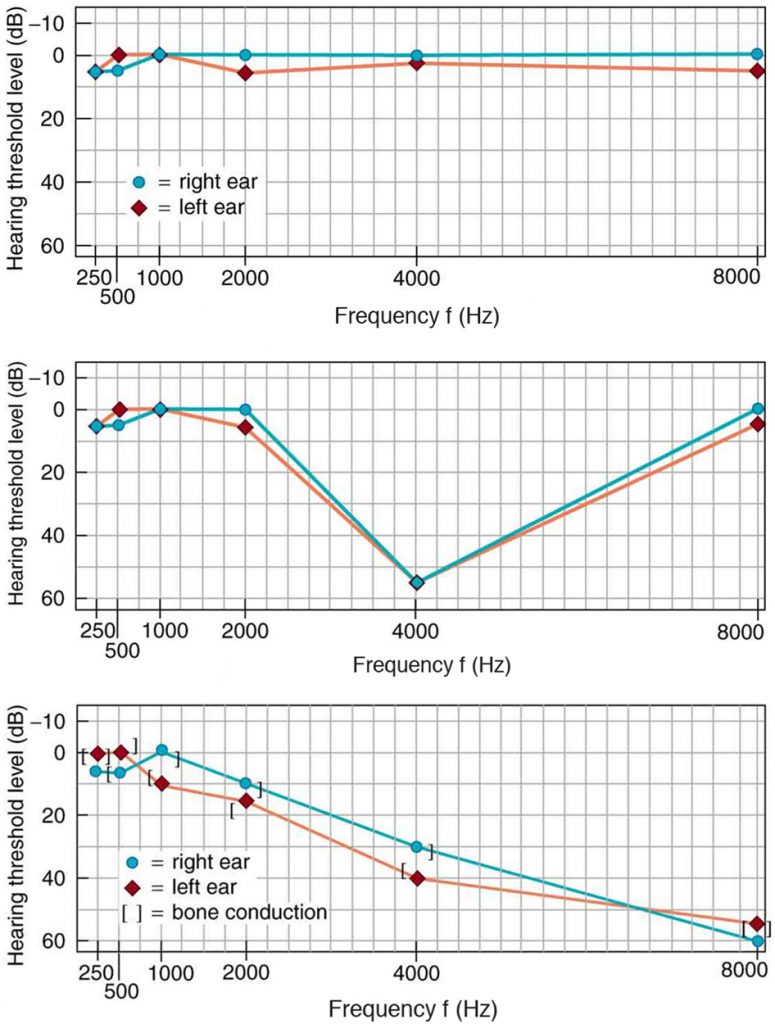Hearing Loss and Central Auditory Processing
56 Age-related Hearing Loss
Learning Objectives
Know the frequencies that are most affected by age-related hearing loss.
Know the term for the condition of age-related hearing loss.
Be able to discuss possible sex differences.
Hearing tests are performed over a range of frequencies, usually from 250 to 8000 Hz, and can be displayed graphically in an audiogram (shown below). Audiograms are measured in adults by asking the patient to push a button to indicate when they hear a sound by your right ear or left ear while wearing headphones. The hearing threshold is measured in dB relative to the normal threshold, so that normal hearing registers as 0 dB at all frequencies.
The most common form of hearing loss comes with age and is called presbycusis—literally “elder ear.” Such loss is increasingly severe at higher frequencies and interferes with music appreciation and speech recognition. While race and gender differences do appear (e.g., Helzner, 2005) they are minor compared to the overall expectation that our hearing thresholds will be elevated at least 20dB at all frequencies, and by more than 40dB at high frequencies, by the time we are 80.

References:
Helzner EP, Cauley JA, Pratt SR, Wisniewski SR, Zmuda JM, Talbott EO, de Rekeneire N, Harris TB, Rubin SM, Simonsick EM, Tylavsky FA, Newman AB. Race and sex differences in age-related hearing loss: the Health, Aging and Body Composition Study. J Am Geriatr Soc. 2005 Dec;53(12):2119-27. doi: 10.1111/j.1532-5415.2005.00525.x. PMID: 16398896.
CC LICENSED CONTENT, SHARED PREVIOUSLY
OpenStax, College Physics for AP Courses Chapter 17.6 Hearing
Provided by: Rice University.
Access for free at https://openstax.org/books/college-physics-ap-courses/pages/1-connection-for-ap-r-courses
License: CC-BY 4.0
Cheryl Olman PSY 3031 Detailed Outline
Provided by: University of Minnesota
Download for free at http://vision.psych.umn.edu/users/caolman/courses/PSY3031/
License of original source: CC Attribution 4.0
Adapted by: Aliciana Bezdicek, John Bates and Sarah Zenaye

